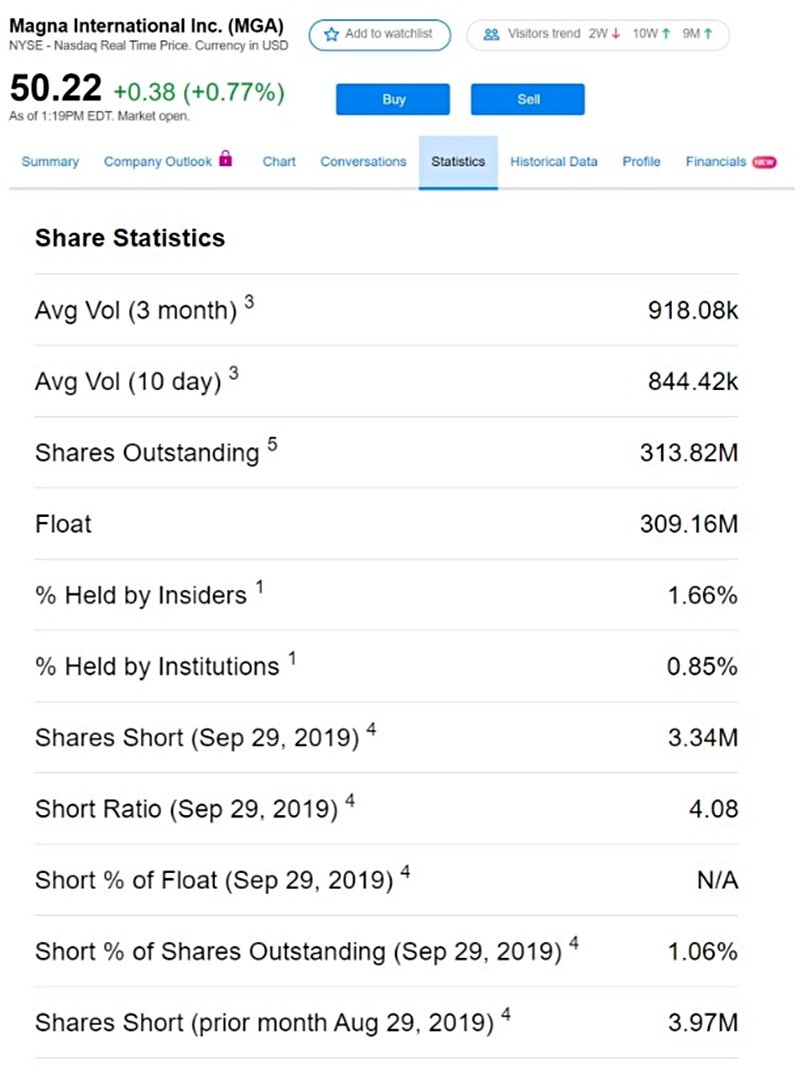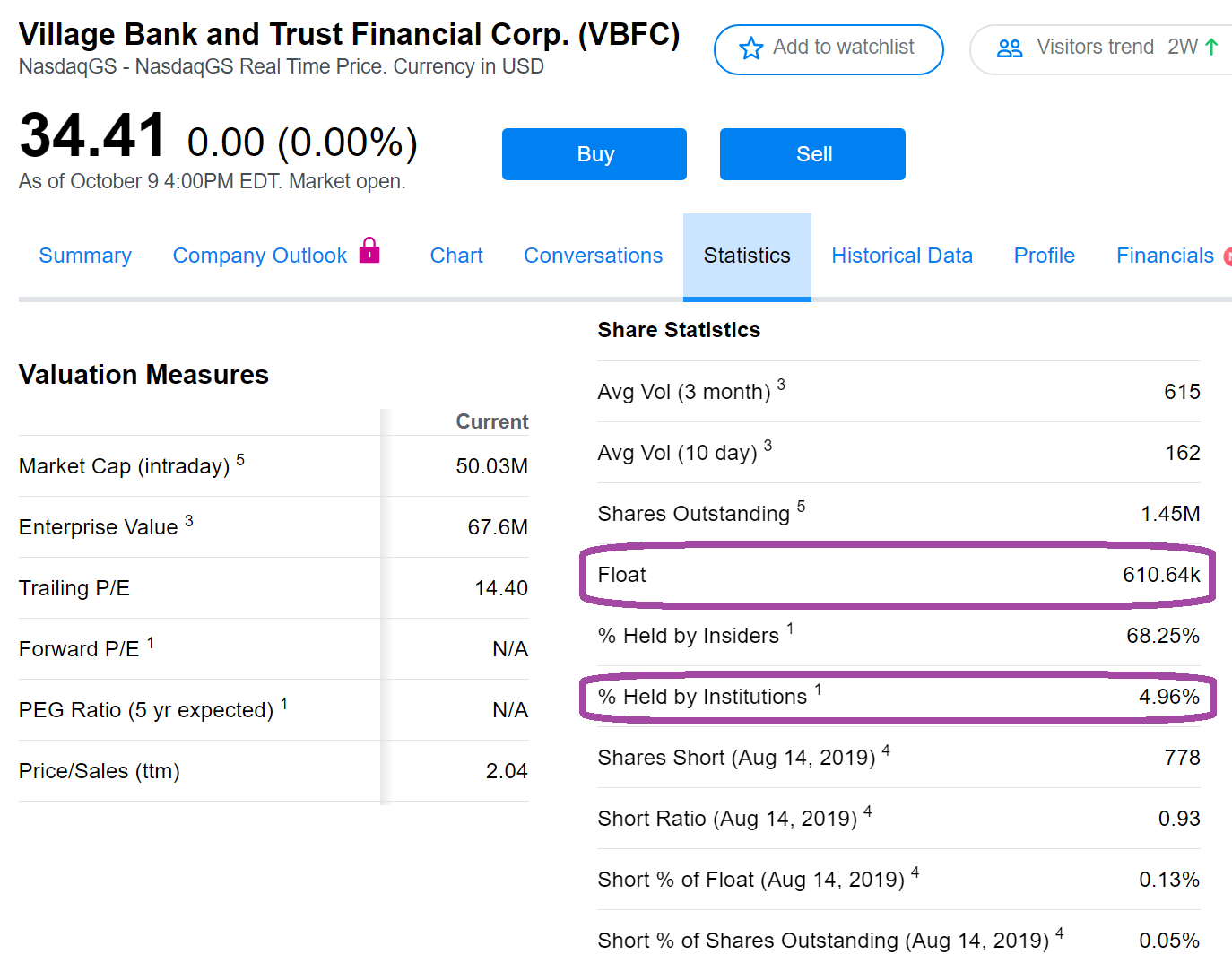When a company wants to raise capital to expand operations, they have several options available to them. One of the most popular methods for raising a lot of money in a short period of time is to take the company public. When a company goes public, they issue shares of stock. This is also known as going public, (Initial Public Offering or IPO). The shares represent a portion of ownership in the company.
What Is Stock Float?
The float of a stock is simply the number of shares available for trading by the general public. When a company goes public, the insiders of the company, including the board, president, CEO, etc., will obviously want to hold onto most of the shares to keep control of the company. Many shares will also be given to the brokerages who helped the company with going public as part of their payment. The remainder of shares that are available to the general public to purchase are known as the float.
Stock float is often overlooked but can offer some great information into how the stock will trade and even if the stock is one you should include in your portfolio.
How Is Stock Float Calculated?
Float is calculated by subtracting the restricted shares from the outstanding shares. Restricted shares are those shares held by insiders of the company, who are usually restricted in how and when they may sell those shares. If a company has ten million shares outstanding, (issued during the IPO) and three million are held by insiders, the float would be seven million shares. 10,000,000 total shares – 3,000,000 restricted shares = 7,000,000 public shares (float)
The float can usually be found easily as many financial websites publish the number. For example, looking at Yahoo Finance you can get a quote on a stock. Once the quote is showing, select Statistics and scroll down on the resulting page to see Float under Share Statistics.
How Float Can Affect Stock Behavior
Stocks have personalities, like people. If you understand the stock’s personality, you have a higher probability of correctly predicting its future behavior. As mentioned previously, the float will also dictate many characteristics of the stock’s personality.
The first characteristic is volatility. The float and stock’s volatility have an inverse relationship. When there is a low float, the stock is more likely to have high volatility and wilder price swings. While price swings are fun and profitable when in your favor, a low float and big price moves could increase your losses due to slippage on your stops.
While there is not a specific definition for a low float, a stock with less than 10 to 20 million shares is considered to be a low float. Looking at the following stock, you can easily see the issue with charting a low float stock. AMCON Distributing Company (DIT), has a very low float of 194,000 shares.
When looking at the chart, the average true range of $2 per day seems attractive. But there are large gaps in the price chart due to very low float and low volume. You are likely to get a worse price on your stop loss because prices can gap beyond your intended stop price.
The high volatility that creates higher risk can also be an opportunity for profits when trading. Companies with a low float will have a more pronounced reaction to news on the company than companies with a higher float. If you expect a positive or negative announcement on a low float company and are able to enter a position prior to the announcement, you stand the chance of a larger price move in your favor because prices on low float stocks can move much further on lower volume.
Some traders do very well trading and investing in low float companies. although most prefer the higher predictability of larger float companies. Remember, Online Trading Academy’s Core Strategy relies on being able to identify and trade with the institutions and, more importantly, anticipate where their order flow will cause prices to move. Looking at the following low float stock, Village Bank and Trust Financial Corp. (VBFC), the float is only a little over 610,000 shares.
The institutional participation is only 4.96% of the float. That means that most of the price action is likely to be caused by the general public and could be unpredictable.
Neither Freedom Management Partners nor any of its personnel are registered broker-dealers or investment advisers. I will mention that I consider certain securities or positions to be good candidates for the types of strategies we are discussing or illustrating. Because I consider the securities or positions appropriate to the discussion or for illustration purposes does not mean that I am telling you to trade the strategies or securities. Keep in mind that we are not providing you with recommendations or personalized advice about your trading activities. The information we are providing is not tailored to any individual. Any mention of a particular security is not a recommendation to buy, sell, or hold that or any other security or a suggestion that it is suitable for any specific person. Keep in mind that all trading involves a risk of loss, and this will always be the situation, regardless of whether we are discussing strategies that are intended to limit risk. Also, Freedom Management Partners’ personnel are not subject to trading restrictions. I and others at Freedom Management Partners could have a position in a security or initiate a position in a security at any time.
Editors’ Picks
EUR/USD trades with negative bias, holds above 1.0700 as traders await US PCE Price Index

EUR/USD edges lower during the Asian session on Friday and moves away from a two-week high, around the 1.0740 area touched the previous day. Spot prices trade around the 1.0725-1.0720 region and remain at the mercy of the US Dollar price dynamics ahead of the crucial US data.
USD/JPY jumps above 156.00 on BoJ's steady policy

USD/JPY has come under intense buying pressure, surging past 156.00 after the Bank of Japan kept the key rate unchanged but tweaked its policy statement. The BoJ maintained its fiscal year 2024 and 2025 core inflation forecasts, disappointing the Japanese Yen buyers.
Gold price flatlines as traders look to US PCE Price Index for some meaningful impetus

Gold price lacks any firm intraday direction and is influenced by a combination of diverging forces. The weaker US GDP print and a rise in US inflation benefit the metal amid subdued USD demand. Hawkish Fed expectations cap the upside as traders await the release of the US PCE Price Index.
Sei Price Prediction: SEI is in the zone of interest after a 10% leap

Sei price has been in recovery mode for almost ten days now, following a fall of almost 65% beginning in mid-March. While the SEI bulls continue to show strength, the uptrend could prove premature as massive bearish sentiment hovers above the altcoin’s price.
US economy: Slower growth with stronger inflation

The US Dollar strengthened, and stocks fell after statistical data from the US. The focus was on the preliminary estimate of GDP for the first quarter. Annualised quarterly growth came in at just 1.6%, down from the 2.5% and 3.4% previously forecast.
RECOMMENDED LESSONS
Making money in forex is easy if you know how the bankers trade!
Discover how to make money in forex is easy if you know how the bankers trade!
5 Forex News Events You Need To Know
In the fast moving world of currency markets, it is extremely important for new traders to know the list of important forex news...
Top 10 Chart Patterns Every Trader Should Know
Chart patterns are one of the most effective trading tools for a trader. They are pure price-action, and form on the basis of underlying buying and...
7 Ways to Avoid Forex Scams
The forex industry is recently seeing more and more scams. Here are 7 ways to avoid losing your money in such scams: Forex scams are becoming frequent. Michael Greenberg reports on luxurious expenses, including a submarine bought from the money taken from forex traders. Here’s another report of a forex fraud. So, how can we avoid falling in such forex scams?
What Are the 10 Fatal Mistakes Traders Make
Trading is exciting. Trading is hard. Trading is extremely hard. Some say that it takes more than 10,000 hours to master. Others believe that trading is the way to quick riches. They might be both wrong. What is important to know that no matter how experienced you are, mistakes will be part of the trading process.




